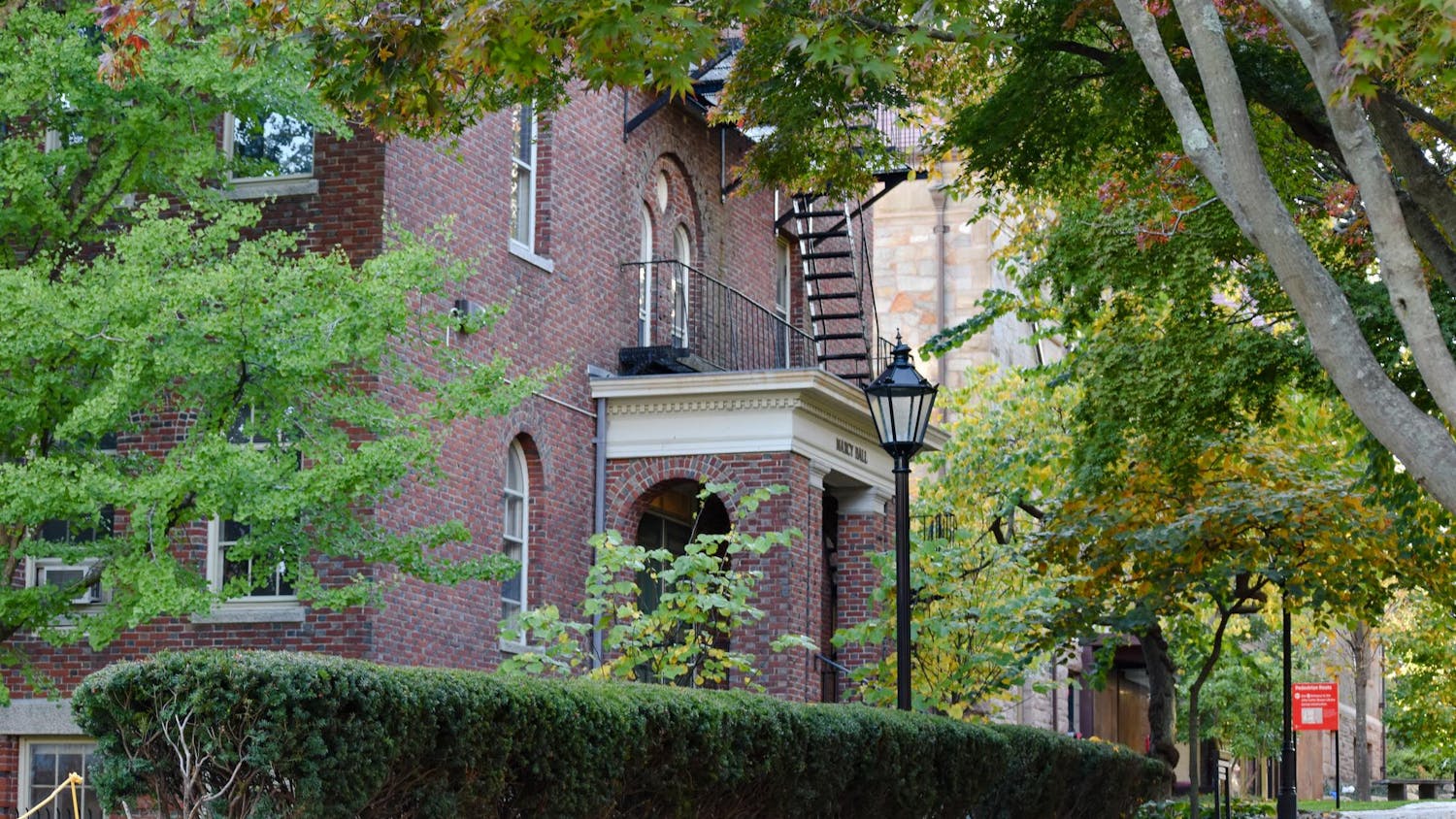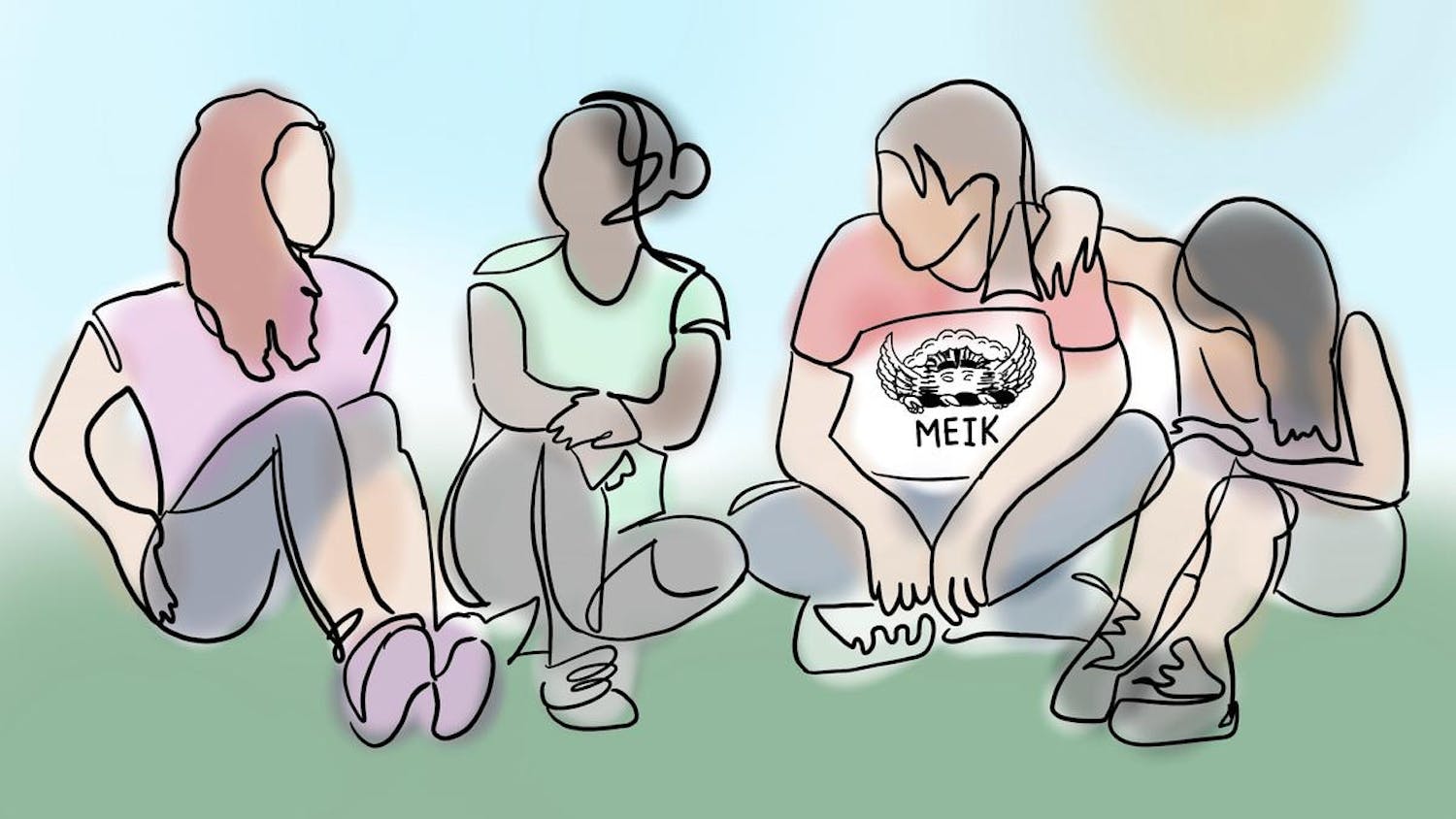University officials canceled classes and closed administrative offices for a second consecutive day Tuesday as Rhode Island picked up in the aftermath of Sandy, a Category 1 hurricane affecting millions up and down the East Coast. While the Ocean State was spared the brunt of the storm, coastal areas of New York and New Jersey were left devastated in Sandy's wake, experiencing severe flooding and power outages.
All University business is expected to proceed normally today.
"The University fared well during the storm, with some downed trees and only minor damage to a small number of facilities," according to an email alert sent to the Brown community.
The continuing education building and the Alpert Medical School, located in Providence's Jewelry District, both experienced minor roof leaks, said Marisa Quinn, vice president for public affairs and University relations. A third floor window in Vartan Gregorian Quadrangle was also blown out.
Workers removed a large fallen tree behind Wilson, Quinn said, adding that several more trees fell on Young Orchard Avenue and the Barus and Holley walkway. Workers also spent time yesterday hauling away sandbags, clearing sidewalks and "removing nearly two tons of debris from campus," according to the email. The Provost's office is expected to send out information regarding make-up classes within the next week.
Quinn said the storm caused less damage to the University than Hurricane Irene, a category 1 Hurricane that swept through Rhode Island in August 2011. Last year's storm caused "more water intrusion, several power outages, and more trees were affected," she said. No Sandy-related power outages were reported on campus.
"A lot of our utilities are underground, and we are up on hill," Quinn said. "We also prepared for the worst and fared pretty well."
Peak gusts of 86 miles per hour were recorded in Westerly, R.I., and Judith, the state's southern-most tip, experienced sustained 81 mile per hour winds, said Charlie Foley, a meteorologist for the National Weather Service in Taunton, Mass.
Foley said it is too soon to draw accurate comparisons between Sandy and past systems, but noted that it caused significant wind damage, coastal erosion and flooding in almost every state in its path.
At Sandy's height, more than 120,000 Rhode Island customers were without power, concentrated largely in coastal areas of the state. As of press time, fewer than 100,000 Rhode Islanders were still experiencing power outages, according to the Providence Journal.
The state's capital took only a glancing blow from the storm. The Providence Emergency Management Agency received approximately 60 calls regarding fallen trees and downed power lines, said Peter Marinucci, the agency's deputy director.
When the hurricane's peak winds lashed the state, 1,600 Providence customers were without power, a number that was down to 600 by 12 p.m. yesterday, Marinucci said. The Fox Point Hurricane Barrier and street gates were closed to prevent flooding. At high tide, waters were at about 9.8 feet above normal levels, he said.
Public schools were expected to reopen today. Trash pickup has been rescheduled, and most businesses are expected to operate normally. "We had high winds," Marinucci said of the storm. "But it was not as bad as Irene."
Coastal areas of Rhode Island saw much more of Sandy's force. Low-lying areas including Westerly, Charlestown, Narragansett and South Kingstown all experienced high winds, heavy power outages and significant flooding.
Ross Cheit, professor of public policy and political science, lives in Wickford, R.I., a seaside community just south of North Kingstown.
"I'm sure the East Side (of Providence) just thinks, 'What hurricane?'" he said.
Wickford is normally at 11 feet above sea level, but was down to about five by Sunday evening, he said. "The water came up more than I've ever seen it."
"There were a lot of trees down, and it was really windy," Cheit added. "I've been here (in Rhode Island) 25 years, and I've been through a couple of these. This was definitely the strongest one I've ever felt."
Sandy also scuttled travel plans across the country. More than 18,100 flights were cancelled, according to FlightAware.com.
Rachel Friedberg, senior lecturer in economics, said she has been trying to get home from the Chicago O'Hare Airport since Sunday. Her flight has already been rescheduled several times, and Friedberg said she was unsure if she would make it back for Wednesday classes.
Both professors, who have each been with Brown for over 20 years, said they could not remember a time when the University had canceled classes for two consecutive days.
"I was awfully glad I didn't have to come in on Monday," Cheit said, adding that he understood the University's decision to cancel for a second day. "For any professors who live anywhere off campus, it was a very good call."
"These are really very difficult decisions to make," Quinn said of the cancellations, mentioning the challenge of rescheduling classes. "When we are considering the safety of our students, faculty and staff, it's something we weigh carefully."




